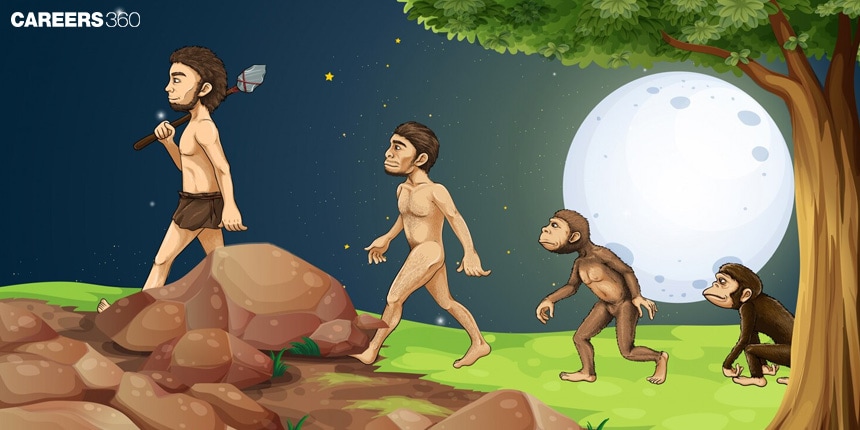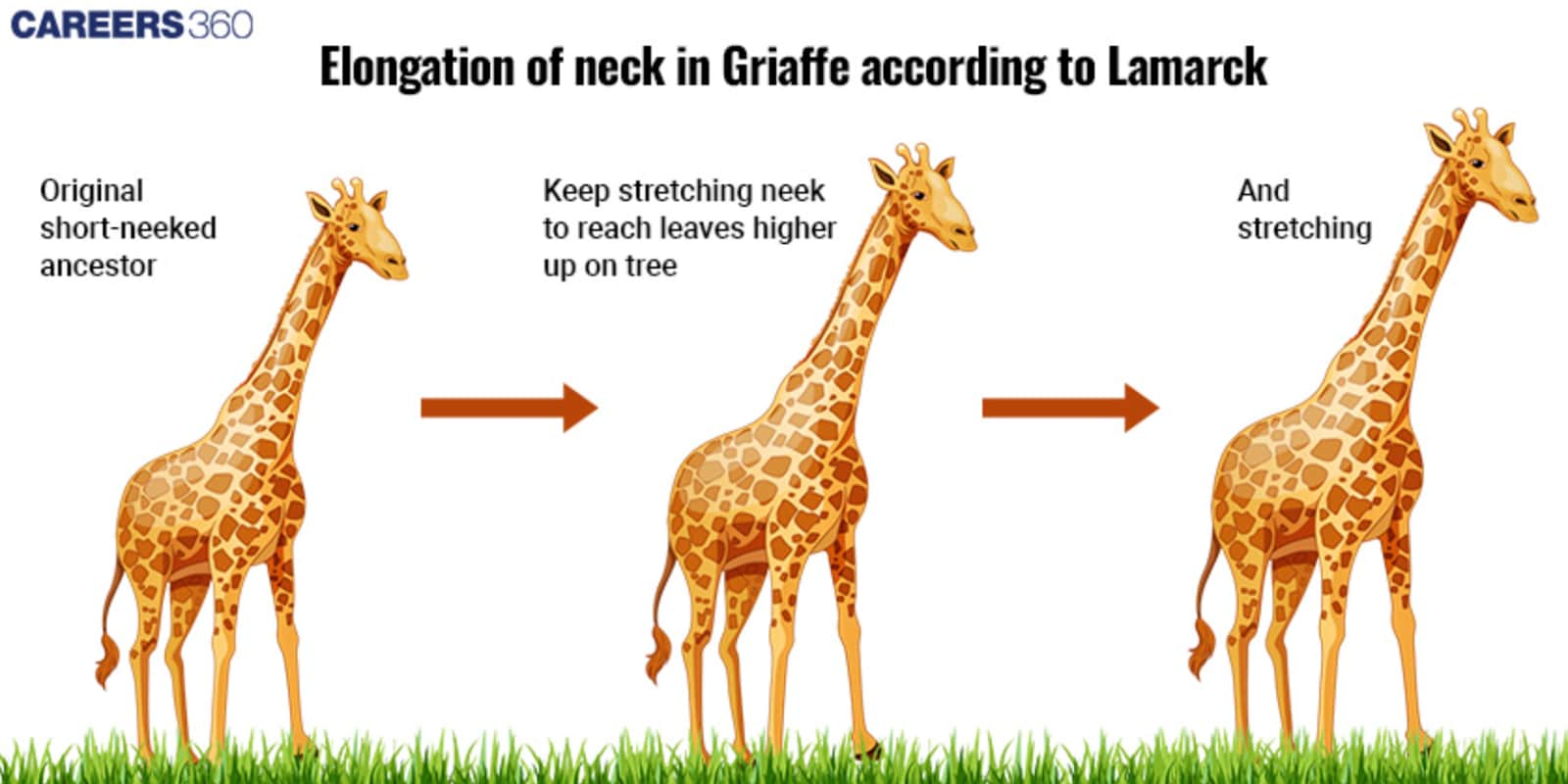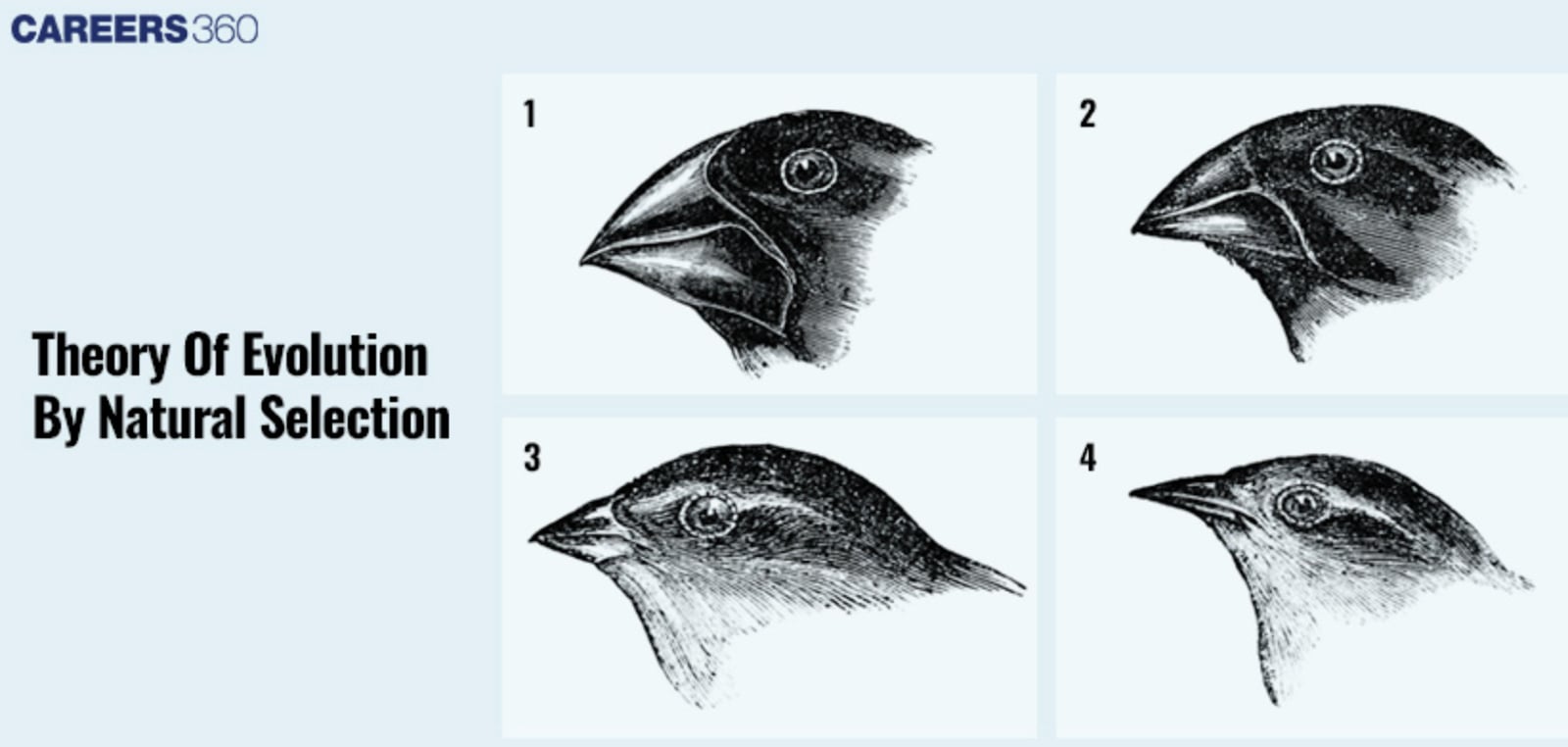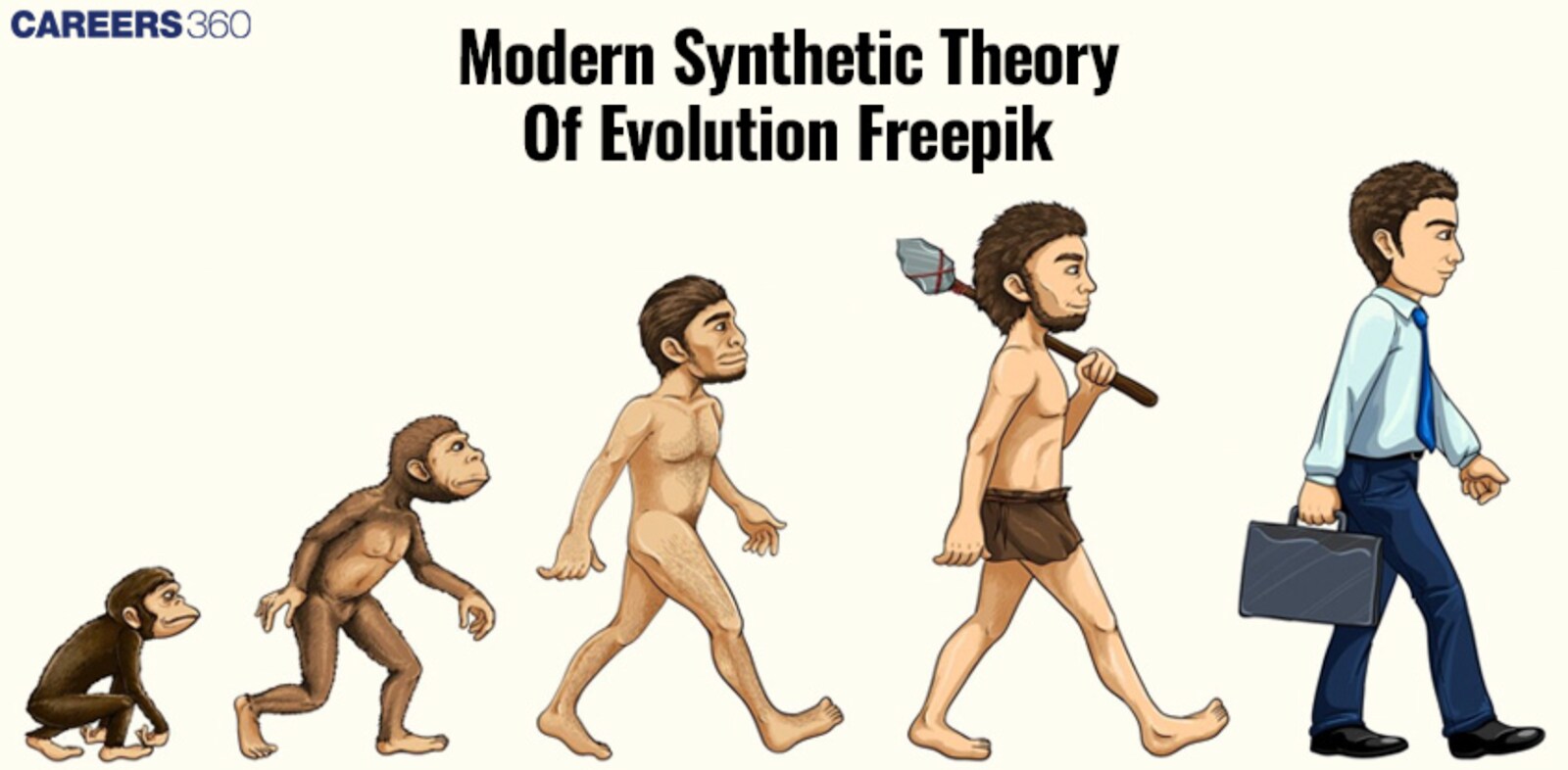Theories of Evolution: Definition, Types and Examples
What is Evolution?
Evolution is way more than just a scientific concept; it impacts our everyday lives. Take the case of the development of antibiotic-resistant bacteria, for instance. This phenomenon is nothing but a result of the evolutionary process of the bacteria to adapt quickly in the presence of antibiotics. Similarly, the range of breeds of dogs that exist today—from Chihuahuas to Great Danes—is selection work done and applied evolutionary principles in action. It is through the understanding of evolution that we can make better sense of the natural world, from the management of diseases to conservation programs.
NEET 2025: Mock Test Series | Syllabus | High Scoring Topics | PYQs
NEET Important PYQ's Subject wise: Physics | Chemistry | Biology
New: Meet Careers360 B.Tech/NEET Experts in your City | Book your Seat now

The article is therefore going to take one through the intriguing journey of evolutionary thought and some of the central theories governing the thinking regarding present diversity in life. We start with the early beliefs and how the views of creationism gave way to scientific theory. We will then explore major theories: Lamarck's theory of acquired characteristics, Darwin's breakthrough in Natural Selection, the Modern Synthesis that integrates Genetics, Punctuated Equilibrium, and the Neutral Theory of Molecular Evolution.
We will also look at the robust evidence to support these theories, from the fossil record to molecular biology, and the need for their practical applications in medicine and conservation. By the end of it all, you will have acquired a fully-fledged understanding of various theories of evolution and their bearings on science and everyday life.
Theories Of Evolution
Some of the major concepts that build the foundation for our understanding of evolutionary biology.
Lamarck's Theory Of Evolution (Lamarckism)
Jean-Baptiste Lamarck was one of the early scientists who put forth a consistent theory of evolution.
He proposed his theory, Lamarckism, in which he said that organisms could pass on to subsequent generations characteristics acquired through use or disuse in their lifetime. This can be summarised in the very concept of inheritance of acquired characteristics.
For example, Lamarck believed that the giraffes had long necks because their forefathers stretched their necks to browse higher leaves and handed over these prolonged necks to the next generations.
These theories of Lamarck were disproved afterwards, but they did have an importance of their own in the eliciting scientific debate on the mechanisms of evolution.

Darwinian Theory Of Evolution By Natural Selection
Based on his detailed observations and studies, Charles Darwin proposed the theory of evolution through natural selection.
The key concepts in Darwin are variation, competition, survival of the fittest, and natural selection.
Variety exists within members of a population for some trait.
The forms that are more adapted to their environments are more likely to survive and reproduce.
Thus, over time, these traits become very common in the population.
This is elegantly exemplified in the finches of the Galápagos Islands, whereby, in response to natural selection, various species developed beak shapes that gave them the best access to different food sources.

Modern Synthesis (Neo-Darwinism)
The Modern Synthesis or Neo-Darwinism, which emerged in the early 20th century as an amalgamation of Darwin's theory with Mendelian genetics, added flesh and blood to the skeleton: all the evolutionary processes working at the level of genetics.
It focuses on the key concepts relating to mutation, gene flow, genetic drift, and recombination.
Inherent in the theory of evolution is the Hardy-Weinberg equilibrium model, which explains that the allele frequencies remain constant in a population subject to certain conditions that rule out evolutionary factors.
This thus firmly established that evolution has a purely genetic basis and how, from a genetic standpoint, new variations emerge and spread through populations.

Punctuated Equilibrium
This is the theory of punctuated equilibrium, proposed by Niles Eldredge and Stephen Jay Gould, to counter a gradualistic concept of evolutionary change.
Species go through periods of stasis, which are interspersed with short events of very rapid change, possibly generating new species.
This pattern is supported by the often aperiodically abrupt appearance of new forms in the fossil record instead of slow, continuous transitions.
This is evidenced by examples from the fossil record—for instance, the rather sudden appearance of new species of trilobites.
Neutral Theory Of Molecular Evolution
The Neutral Theory of Molecular Evolution was put forward by Motoo Kimura, who pointed out that most evolutionary changes at the molecular level are not caused by natural selection but by genetic drift of neutral mutations.
These "neutral mutations" do not affect an organism's fitness and are thus accumulated at a constant rate.
The bearing of this theory on our understanding of genetic variation and molecular evolution is huge.
It suggests that most of the genetic diversity we observe among and between species is due to random processes rather than adaptive evolution.
Evidence Supporting Evolution
These are the central forms of evidence which support the theories of evolution and make the case for the relatedness of life.
Fossil Record
The fossil record is a record of life on Earth. Fossils, being the remains or impressions of ancient organisms, present information about the history of species change.
Especially important are transitional fossils, such as Archaeopteryx, which show both dinosaur and bird characteristics.
These theories strongly indicate the intermediate states between ancestral forms and their descendants.
Comparative Anatomy
Comparative anatomy is the study of similarities and differences in structure between organisms.
The homologous structures comprised the forelimbs of humans, bats, and whales.
They demonstrate common ancestry because even though they accommodate completely different functions, they are very similar in terms of bone structure.
The analogous structures would then be the wings of birds and insects, as these bear a similar function but hold independent evolutionary histories.
Vestigial structures are the remnants of structures functional in ancestral species—the appendix in humans is an example.
Homologous structures of different species illustrate these relationships.
Embryology
It's part of the study of embryology, about how organisms develop from a fertilised egg to a mature form.
In contrast to this, however, many species demonstrate embryonic stages that suggest common ancestry.
For instance, vertebrates, such as fish, birds, and humans, all have embryos that display a sequence of similar developmental stages.
Indeed, a comparison diagram in vertebrate embryology reflects these features and offers very strong evidence for evolution.
The vast majority of embryonic similarities are suggestive that all vertebrates must have shared a common ancestor.
Molecular Biology
Molecular biology has documented some of the clearest evidence for evolution.
Comparisons of DNA and protein sequences of different species have allowed researchers to determine genetic relationships among organisms.
Based on this molecular data, genetic markers and phylogenetic trees indicate clear patterns of common descent.
More precisely, a chart of the genes which are held in common between species.
Molecular evidence has confirmed and refined our understanding of the evolutionary tree of life.
Biogeography
Biogeography is the study of species on a geographic level and their geographic distribution, together with how and why they are distributed in their present locations.
The broad patterns, such as unique species found on relatively isolated islands, support the theory of evolution.
Take, for example, the several finch species of the Galapagos Islands, very distinct yet closely related.
They show adaptive radiation or how species can evolve from one ancestor to quite different ecological niches.
Geographic patterns of this nature agree with evolutionary theory.
Applications Of Evolutionary Theory
These are the big areas in which evolutionary theory has application and makes an important difference.
Medicine
Evolutionary theory is full of implications for medicine, particularly within the context of understanding resistance to antibiotics.
Bacteria quickly evolve resistance to antibiotics due to natural selection. This understanding allows methods needed to fight such resistant strains to be devised.
This is because evolutionary or Darwinian medicine applies evolutionary principles in explaining the basis of health and diseases, making it possible to come up with insights on obesity, allergies, and certain mental health disorders.
Increasingly, evolutionary perspectives have already been applied in public health strategies as a means toward better success.
Conservation Biology
The principle of conservation biology entails evolutionary preservation and management of ecosystems to save biodiversity.
The application of correct strategies for conservation can accrue from the evolutionary relationships within species and the genetic diversity exhibited by such species.
For example, genetic diversity conserved in a population may make that particular biospecies more adaptive to a changing environment.
For example, the applied evolutionary insight of the Florida panther conservation. This is an important example of the application of evolutionary insights to guide practical conservation.
These are cardinal strategies in the maintenance of ecological balance and the survival of species in general.
Recommended video for "Theories of Evolution"
Frequently Asked Questions (FAQs)
Among others, some of the most important could be considered Lamarck's theory of acquired characteristics, Darwin's theory of natural selection, the modern synthesis, punctuated equilibrium, and the neutral theory of molecular evolution.
Natural selection is the process wherein those individuals favoured by conditions in their surroundings would have increased chances of survival and thereby be better placed to reproduce, hence passing on these traits that are of advantage to succeeding populations.
Evidence includes fossil record, comparative anatomy, embryology, molecular biology, and biogeography.
While Darwinism deals with natural selection and survival of the fittest, Lamarckism deals with the inheritance of acquired characteristics. While Darwinism has strong scientific roots, Lamarckism has been entirely dismissed.
Also Read
03 Dec'24 10:56 AM
30 Nov'24 08:28 PM
27 Nov'24 08:01 PM
26 Nov'24 11:40 PM
23 Nov'24 01:48 PM
21 Nov'24 05:41 PM
19 Nov'24 02:01 PM
19 Nov'24 11:02 AM
19 Nov'24 08:45 AM
18 Nov'24 10:54 PM
